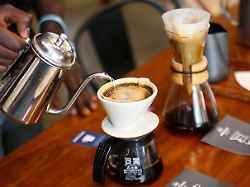“Almost a luxury good”
Coffee prices are soaring in the EU
06/10/2022, 18:41
Picking up a flat white on the corner has become an expensive pleasure, especially in Finland. The price of coffee rose by more than 40 percent. But sugar and milk also became immensely expensive in some EU countries. The Germans still grab the wake-up call vigorously.
Starting the day with a cup of coffee has become significantly more expensive for Europeans. Coffee prices in the European Union rose by an average of 16.9 percent in August compared to the same month last year, as the statistics office Eurostat has now announced. “Recent price hikes could make this morning staple almost a luxury item,” it said.
If you don’t like drinking your coffee black, you have to consider even more factors, because fresh whole milk – for flat white, cappuccino or latte macchiato, for example – rose in price by 24.3 percent. Even greater is the price premium for sugar, which many coffee drinkers add: it cost 33.4 percent more than a year earlier.
Finland and Lithuania recorded the largest price increases for coffee at 43.6 percent and 39.9 percent, respectively, followed by Sweden and Estonia. Poland, on the other hand, reported a sugar price that was more than twice as high. Whole milk prices rose particularly sharply in Hungary (+51.7 percent), Lithuania (+46.8) and Croatia (+43.5). In Germany, for example, low-fat milk cost 33.6 percent more than in August 2021.
The thirst for coffee in Germany has recently increased despite the higher prices: According to a study by the German Coffee Association, coffee drinkers consumed an average of 3.8 cups per capita and per day in the second quarter. That is five percent more than in 2021 as a whole and plus nine percent compared to the pre-pandemic year 2019.
“The main reason for the positive development is the sharp increase in consumption outside of our own four walls,” it said. “During the corona pandemic, consumption increased due to working from home,” said Managing Director Holger Preibisch, explaining this development. “After the pandemic, consumption increases because everyone is now enjoying their coffee outside with friends or acquaintances.”
